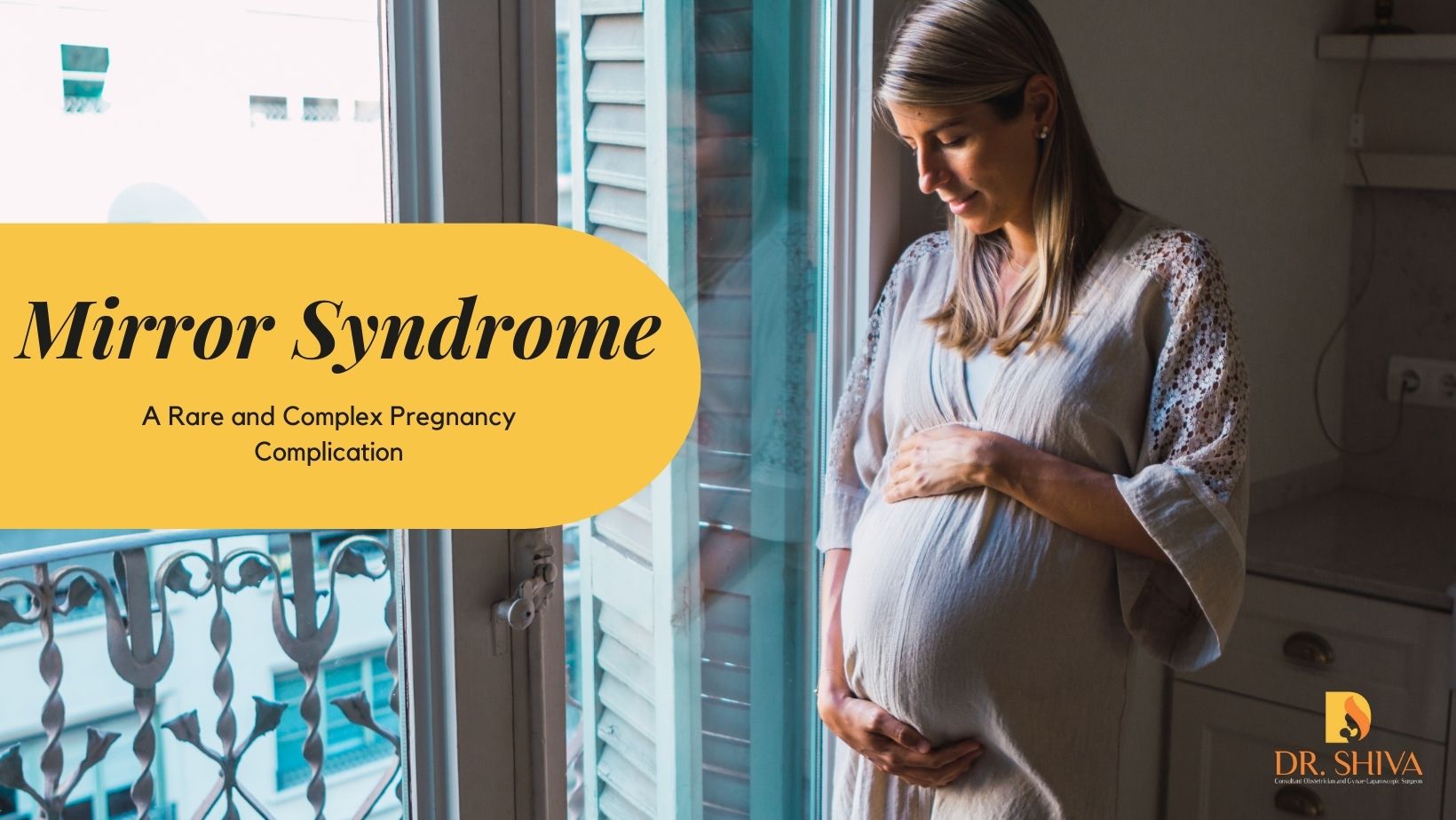
Mirror syndrome, also known as Ballantyne syndrome, is a rare and potentially serious complication that can occur during pregnancy. This syndrome is characterized by the presence of maternal symptoms that mimics the fetal distress or abnormalities. It’s a rare phenomenon, occurring in less than 1% of pregnancies, making it a subject of interest in the field of obstetrics. Here’s a closer look at this intriguing yet challenging aspect of pregnancy.
Symptoms
The hallmark of mirror syndrome is the mirroring of symptoms. If the fetus experiences edema (accumulation of fluid), the mother may develop swelling (edema) as well. Listing similar symptoms below –
- Fetal hydrops: Accumulation of fluid in two or more fetal compartments, leading to a swollen appearance.
- Placental edema: Swelling of the placenta, the organ that nourishes the baby.
- Maternal edema: Excessive fluid buildup in the mother’s tissues, causing swelling in the face, hands, feet, and legs.
Understanding the “Mirror”
The name “mirror syndrome” comes from the way the mother’s symptoms mirror those of the fetus. Just as the baby experiences fluid buildup, so too does the mother. This mirroring effect is what makes the syndrome so unique and concerning.
Causes and Risk Factors
The exact cause of mirror syndrome is not fully understood. However, it’s often associated with severe fetal conditions, such as chromosomal abnormalities, infections, or heart problems. The theory is that the mother’s body reacts to the distress of the fetus, but several factors are thought to be involved:
- Placental abnormalities: Problems with the placenta’s structure or function can lead to fluid imbalances and edema.
- Fetal infections: Certain infections in the baby can trigger fluid buildup.
- Genetic conditions: Some genetic disorders can increase the risk of mirror syndrome.
- Autoimmune diseases: In rare cases, autoimmune diseases in the mother can contribute to the syndrome.
Diagnosing Mirror Syndrome
Diagnosing mirror syndrome involves recognizing the mirroring of symptoms between the mother and the fetus. Monitoring fetal health through ultrasounds and other diagnostic tools is crucial. Elevated maternal blood pressure and protein in the urine might also be observed. Doctors will typically use a combination of tests, including:
- Ultrasound: To assess the baby for signs of hydrops and to examine the placenta.
- Amniocentesis: A procedure to collect amniotic fluid for genetic testing.
- Blood tests: To check for maternal infections and other underlying conditions.
Treatment and Management
The treatment focuses on managing the symptoms, addressing the underlying fetal conditions and improving the chances of a healthy pregnancy. This may involve:
- Hospitalization: Close monitoring of both mother and baby is essential.
- Medications: Drugs to control blood pressure, reduce fluid buildup, and treat any underlying infections.
- Delivery: In some cases, If the fetus is in distress ,early delivery may be necessary to save the baby’s life, even if it’s premature. This decision requires careful evaluation of both maternal and fetal well-being.
Prognosis
The prognosis depends on the severity of the underlying fetal conditions. Prompt diagnosis and intervention can improve outcomes for both the mother and the baby.
Psychological Impact
Dealing with mirror syndrome can be emotionally challenging for expectant mothers. The psychological impact of seeing their own health decline as a reflection of the fetus’s condition adds another layer of complexity to the situation.
Conclusion
A diagnosis of mirror syndrome can be a frightening and confusing experience for expecting parents. While mirror syndrome is rare, its occurrence emphasizes the intricate connection between a mother and her unborn child. Understanding this syndrome is crucial for timely intervention and the best possible outcome for both maternal and fetal health.

